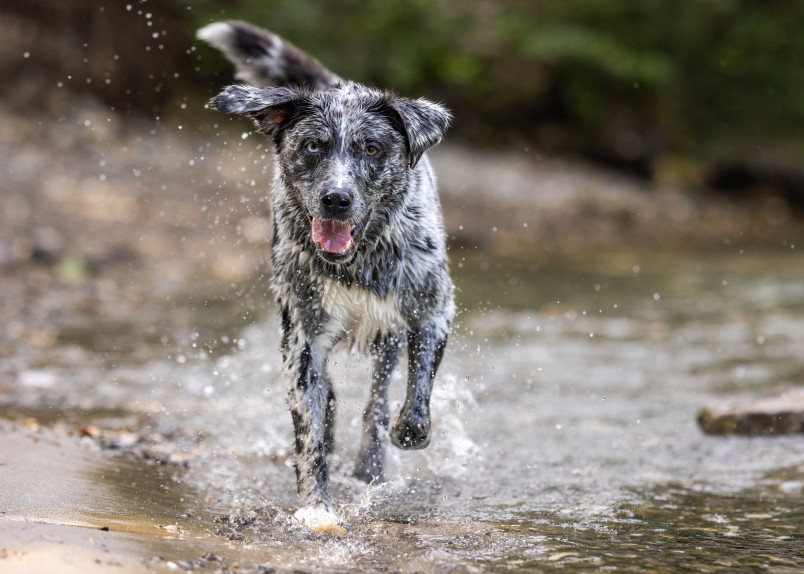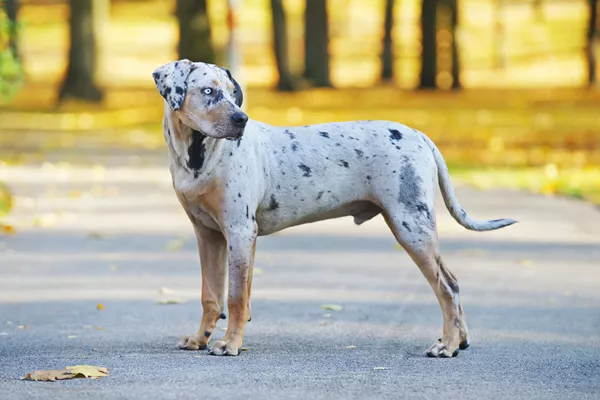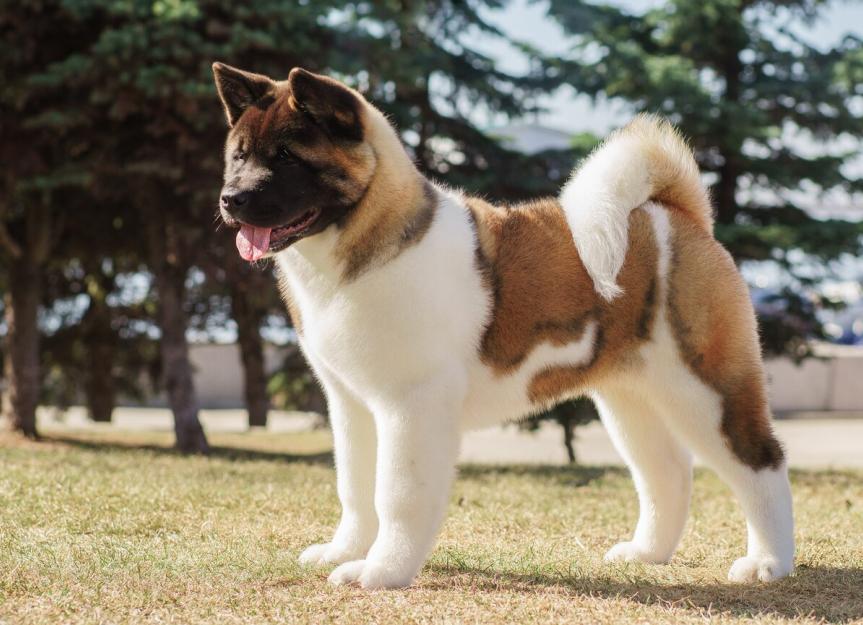High-Energy Dogs That Need Room to Roam
Dogs come in all sizes, temperaments, and energy levels. While some breeds are content curling up on the couch, others seem to run on an endless battery. These high-energy dogs were originally bred for work—herding livestock, hunting game, pulling sleds, or guarding land. That work ethic is still very much alive in them today. Without enough physical and mental stimulation, these dogs can become restless, bored, and even destructive.
It’s important to understand that high-energy breeds don’t just enjoy the outdoors—they need it. A quick walk around the block or a few minutes in a small yard won’t cut it. These dogs thrive in wide open spaces, where they can sprint, sniff, explore, and do what their instincts demand.
In this article, we’ll explore some of the most energetic dog breeds that need space to roam. If you’re thinking of bringing one of these lively companions home, you’ll want to make sure your lifestyle and environment can support their needs. We’ll also touch on how some of these breeds can serve as incredible emotional support animals (ESAs) and how to obtain a letter for emotional support animal from trusted sources like RealESALetter.com.
Why Space Matters for High-Energy Dogs
High-energy dogs are typically intelligent, alert, and driven. Many of them were bred for jobs that required endurance, agility, and sharp instincts. That legacy is still in their DNA. So when these dogs are cooped up in small apartments or not given enough daily activity, problems arise—chewing furniture, barking excessively, digging, escaping, or even aggression.
They need open areas to burn off energy, follow scents, and stimulate their minds. A large yard, access to trails, or daily hikes can help channel their energy positively. Training, agility sports, and playtime with other dogs also help, but nothing replaces space and freedom of movement.
Now let’s explore some dog breeds that truly embody the need to roam.
1. Australian Shepherd Lab Mix: Smart, Loyal, and Always on the Move

The Australian Shepherd Lab Mix is a combination of two powerhouse breeds—both known for intelligence and athleticism. These dogs are eager to please and always ready for a challenge. Australian Shepherd Lab mix personality traits include high energy, loyalty, and a strong desire to work, which means they need mental tasks just as much as physical ones. Ideal for families that enjoy outdoor adventures, this mix thrives with hiking, agility courses, advanced obedience, or even dog sports like frisbee or dock diving. Living in a space without a large fenced yard can be frustrating for them unless you're ready to commit to daily high-energy activities.
Highly intelligent and eager to please.
Requires both mental and physical stimulation daily.
Thrives in active households with large yards or outdoor activities.
2. American Leopard Hound: The Tireless Tracker

Originally bred for treeing game, the American Leopard Hound is built for endurance. These dogs are incredibly fast, agile, and determined when following a scent. They excel in rural settings where they can patrol a large area, track scents, and move freely. American Leopard Hound coat colors and patterns vary widely, often featuring striking spots or brindle markings that add to their distinctive look.
This breed doesn’t just enjoy the outdoors—it requires it. Without access to nature or large enclosed spaces, this dog may become stressed or anxious. Perfect for country life or an active owner who enjoys the outdoors, the American Leopard Hound is a rugged and loyal companion.
Built for endurance with fast and agile movement.
Needs access to large, rural spaces to patrol and explore.
Distinctive coat colors and patterns with spots or brindle markings.
3. Catahoula Leopard Dog: Louisiana’s Boldest
Don’t be fooled by the beautiful coat of the Catahoula Leopard Dog—underneath lies a serious working dog. Bred in the swamps of Louisiana for herding wild hogs and cattle, the Catahoula is independent, intelligent, and fearless. The Catahoula Leopard Dog personality with family and children can be loyal and protective, but they need early socialization and clear boundaries to thrive in a home setting.
These dogs aren’t suited to novice owners or city life. They need room to run, explore, and be given a job to do. Without structure and open space, they can become dominant or even aggressive. However, with proper guidance and the right environment, Catahoulas are unmatched in loyalty and work ethic.
Independent and fearless working dog.
Requires early socialization for family and children compatibility.
Needs space and structure to prevent dominance or aggression.
4. Akita Shepherd: A Giant with a Purpose
The Akita Shepherd, a blend of the Akita and German Shepherd, brings together strength, bravery, and intelligence. This breed is naturally protective and thrives in a spacious environment where it can patrol and protect. Common health problems in Akita Shepherds may include hip dysplasia, bloat, and certain autoimmune conditions, so regular vet checkups and a healthy lifestyle are important.
The Akita Shepherd may appear calm indoors, but it has deep-rooted energy needs. Long walks, open areas to run, and daily engagement are essential. If you’re a confident dog owner with access to land or large yards, this breed is an excellent guardian and companion.
Strong and protective guardian breed.
Prone to health issues like hip dysplasia and bloat.
Needs daily exercise and large areas for mental and physical engagement.
5. Australian Shepherd Husky: The Unstoppable Athlete
Mix the intelligence of the Australian Shepherd with the endurance of the Siberian Husky and you get a working machine. The Australian Shepherd Husky is clever, energetic, and needs constant stimulation. Dental care for Australian Shepherd and Husky mix dogs is important, as their active lifestyle and genetics can make them prone to dental issues if not properly managed.
This dog will easily run circles around you—literally. They require daily runs, advanced mental challenges, and a lot of open space. Without this, they can become anxious or destructive. For families or individuals who love staying active, this dog will match your pace and keep you on your toes.
Energetic mix needing constant mental and physical challenges.
Requires careful dental care due to genetic predispositions.
Excellent companion for active individuals and families.
6. Akita: Reserved but Driven
The Akita is not hyper in the traditional sense but has a strong presence, high stamina, and a natural urge to guard and move. The origin of the Akita dog breed in Japan explains their deep-rooted instincts for hunting and guarding royalty, which is why they prefer calm yet spacious environments.
They love patrolling their territory and need open areas to feel secure and stimulated. They’re not typically dog-park friendly, but regular long walks and yard play are necessary to keep them mentally healthy.
Calm but strong with natural guarding instincts.
Originates from Japan, bred for hunting and guarding royalty.
Needs spacious environments and regular exercise to stay healthy.
Emotional Support Animals (ESAs): Can High-Energy Dogs Help Emotionally?
While we often associate emotional support animals with gentle lap dogs, high-energy breeds can also provide deep emotional benefits. Their loyalty, protective nature, and need for companionship make them ideal for individuals who struggle with anxiety, PTSD, depression, or other emotional challenges.
Having a high-energy dog as an ESA can be especially helpful for people who benefit from a more active lifestyle as part of their healing journey. Going on walks, playing fetch, or training together can offer both physical and emotional therapy.
To legally recognize your dog as an emotional support animal, you’ll need an ESA letter from a licensed mental health professional.
Where to Get a Legitimate ESA Letter
One trustworthy place to get an ESA letter online is RealESALetter.com. They connect you with licensed mental health professionals who evaluate your need and provide a letter that complies with federal housing and travel guidelines.
This ESA letter allows you to live in housing that typically doesn’t allow pets and may help you travel with your support animal in certain situations. Whether your ESA is a calm companion or a high-energy breed, RealESALetter.com ensures your support animal is legally recognized and protected.
Final Thoughts: The Right Dog in the Right Environment
Owning a high-energy dog is incredibly rewarding—but only if you're prepared. These dogs need more than love and food—they need space, exercise, engagement, and a dedicated owner who understands their instincts.
If you live on a farm, near trails, or have a large fenced yard, these breeds—like the American Leopard Hound or Catahoula Leopard Dog—can thrive and become incredible companions. If you're in an apartment or small home, consider how much time and effort you can realistically dedicate to their exercise.
And remember, these dogs can offer emotional support just as effectively as any other breed. With the help of RealESALetter.com, you can ensure your energetic dog is also recognized as your emotional support partner.
Frequently Asked Questions
Q1: What are the signs that my high-energy dog needs more exercise?
Restlessness, destructive behavior, excessive barking, and digging can all be signs your dog needs more physical and mental stimulation.
Q2: Can I keep a high-energy dog in an apartment?
It's possible, but extremely challenging. You’ll need to provide long walks, active playtime, and mental enrichment every day.
Q3: Can high-energy breeds be good family pets?
Yes, with proper training and socialization. They're often great with active families who include the dog in their daily routines.
Q4: What is an ESA letter and who needs it?
An ESA letter is a document from a licensed mental health professional that recognizes your dog as an emotional support animal. It’s needed to qualify for housing and travel rights.



